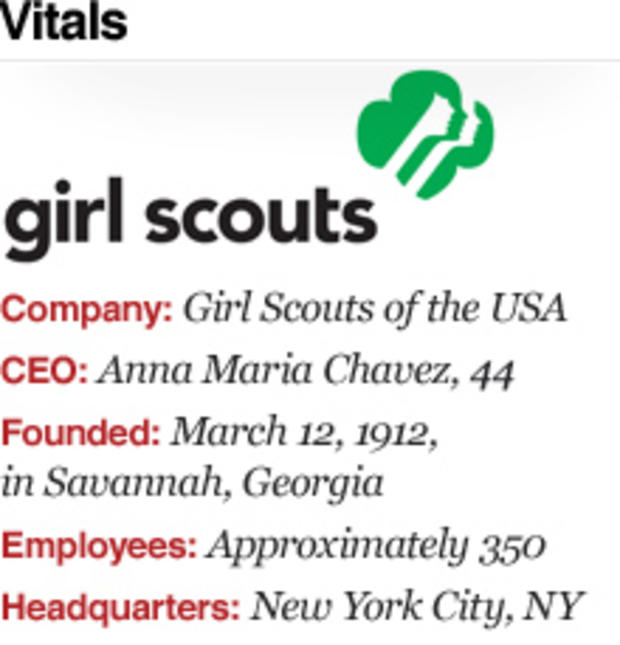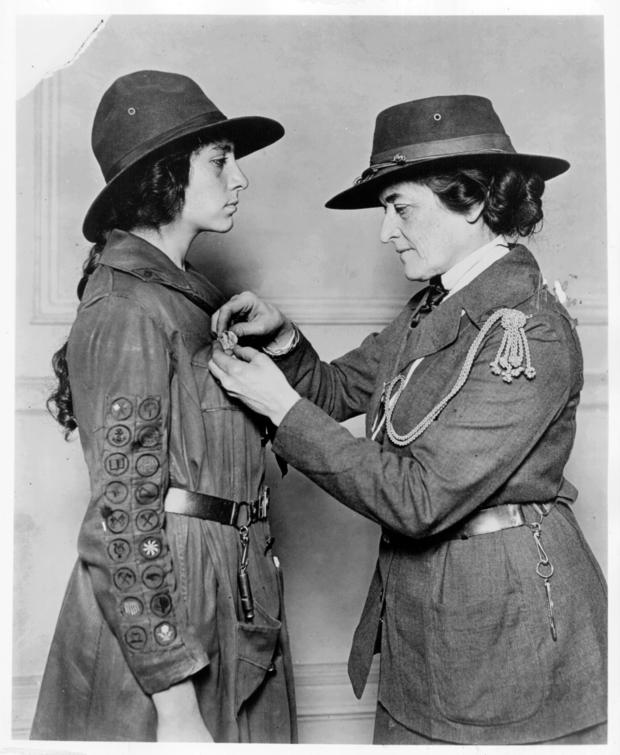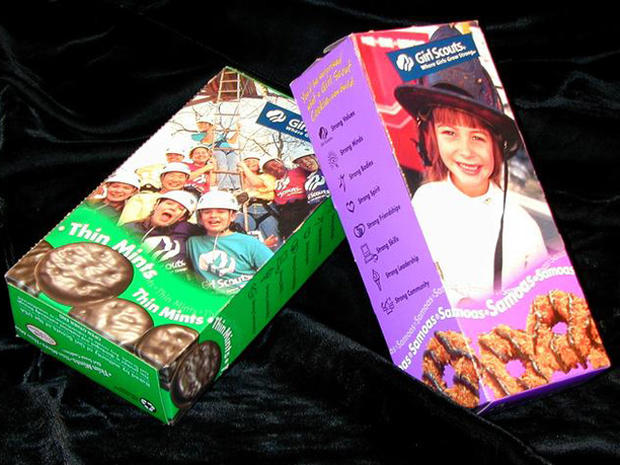Girl Scouts teach service one cookie at a time
(MoneyWatch) It's "National Girl Scout Cookie Day," so here on The Startup we're taking a look at the organization that brought us Thin Mints, Samoas and Tag-a-longs. Full disclosure: I was a Girl Scout back in the day. And after we sold our cookies, my troop took the proceeds and put them towards a night at the Embassy Suites in Downtown Minneapolis... and it was awesome!
Anna Maria Chavez, CEO of Girl Scouts of the USA, spoke to us about the history of the organization and how it kicked off the annual cookie drive.
Rebecca Jarvis: Can you give us three lines about what brought you to girl scouts and your background?
Anna Maria Chavez: I grew up in the small town of Eloy, Ariz., raised by a Mexican father and Mexican-American mother. I learned at the kitchen table. My parents were always hosting people and trying to help them resolve their own issues, and I think that's what sparked my ambition for public service. When I was 10, my best friend joined the Girl Scouts, so I did, too. It was an amazing, transformational experience for me. I went away overnight for the first time to the only Girl Scout camp in Tucson. It was only an hour away, but for me it may as well have been light years. It opened up an entire world for me -- a world beyond my town where girls were engaged in commitment to serving others and making their world a better place.
RJ: How and why did the Girl Scouts get their start?
AC: Our movement was born in March, 1912, in Savannah, Ga., and started by a courageous woman named Juliette Gordon Low. At the age of 51, Low made an historic call to her cousin saying, "I've got something for the girls of Savannah -- and all of America and all the world -- and we're going to start it tonight!" She gathered 18 girls to start the first patrols (later known as troops) of "American Girl Guides." The name of the organization was changed to Girl Scouts the following year.
In 1911, Juliette Gordon Low met Sir Robert Baden-Powell, founder of the Boy Scouts and Girl Guides in the U.K. after searching for something meaningful to do with her life, and was drawn to the new youth movement. A year later she started Girl Scouts in the United States.
(For more information about Juliette Gordon Low, see her official website.)
RJ: Who chose the first Girl Scout uniforms and the badges?
AC: The very first Girl Scout uniform was based on the uniform of the British Girl Guides. It was a dark blue middy blouse and skirt with a light blue tie.
The proficiency badges came from England as well, brought over to the U.S. by Juliette Gordon Low when she started the Girl Scout movement. Girl Scouts of the USA started making badges the following year; they appear in the first handbook in 1913.
Later, Juliette Gordon Low was very involved with the design of the official Girl Scout uniform for Girl Scouts of the USA. In 1914, the first official uniform consisted of a skirt with a tucked-in blouse, in either blue or khaki, with a kerchief tied in a four-hand knot.
RJ: What was the first Girl Scout cookie, and how much did the first box of cookies cost?
AC: Our cookie program is 95 years old this year. Cookies actually weren't in the mix at the start of the Girl Scout movement in 1912. In fact, the first recorded sale of Girl Scout cookies did not occur until 1917 in Muskogee, Okla., when a local troop decided to sell cookies to raise money. They were simple sugar cookies, homemade by Girl Scout and their families.
Unfortunately, we don't have an exact record of how much those first cookies sold for. But an article in "The American Girl" magazine from July 1922 lists the price of Girl Scout cookies at 25 or 30 cents per dozen. That same article also recorded the earliest cookie recipe, which we have on record.
RJ: What's the record for most boxes of cookies sold by a single scout or troop?
AC: We don't actually track records of boxes sold at each Council at GSUSA. Each Girl Scout council celebrates their top sellers at the local level; however, GSUSA does not collect this information. We ask councils to provide us with stories and sales details on an annual basis, but we have never tracked individual girl sales activity.
RJ: What's most popular Girl Scout cookie?
AC: The classic Thin Mint is the most popular cookie in our lineup. This is followed by the Caramel delight/Samoa, the Peanut Butter Pattie/Tag-a-long, the Do-si-do/peanut butter sandwich and the trefoil. These five varieties make up the majority of all cookie sales nationwide.
RJ: How much is a box of cookies? How much money do Girl Scouts make on each? Where are the cookies made?
AC: The price of a box of cookies is determined by the local council and varies by community, ranging between $3.50 and $5.
How the cookie crumbles varies from council to council, but roughly for a $4 box of cookies we estimate that 25 percent pays the baker for the wholesale cost of the product; 25 percent goes directly back to girls and troops in the form of troop proceeds and "girl rewards"; and 50 percent is retained by the local Girl Scout council to support local programs and facilities.
The cookies are produced in two American bakeries. One is located in Sioux City, S.D., and one is located in Louisville, Ky.
RJ: What does National Girl Scout Cookie Day in New York consist of?
AC: National Girl Scout Cookie Day is about letting the world know that our cookie program is more than a fundraiser, and so much more than cookies. It will be an opportunity for our entire movement to speak with one voice about all the benefits girls derive from our cookie program, and how it's helping mold the next generation of female entrepreneurs.
From goal-setting and decision-making to people skills, money management and ethics, our cookie program does more than any other on earth to teach girls lessons in basic business acumen that will serve them for the rest of their lives.
More than 90 of our national councils will coordinate their efforts with us to tell the real story of the cookie program, through a media blitz that will include local and national news coverage, an extensive online and social media presence, and a cookie truck that will throughout New York City to promote and help Girl Scouts sell cookies.



